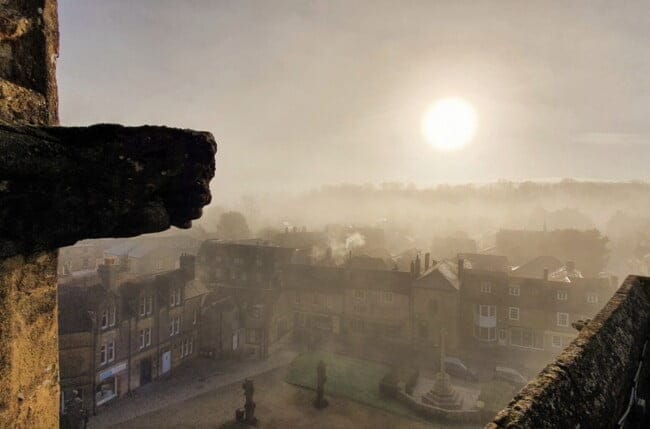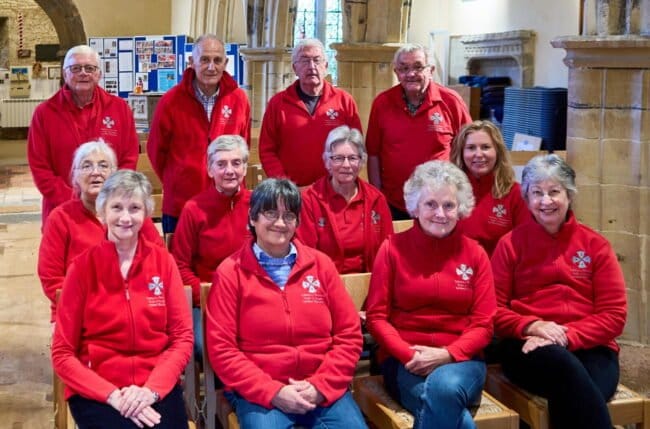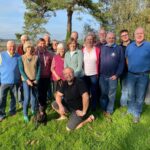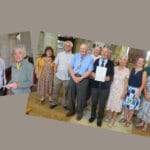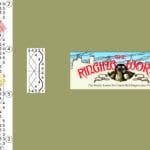Congratulations are due to Wimborne for the commendable achievement of coming third out of ten bands in the South West 12 Bell Competition which was held at Newport Cathedral on Saturday 11th October. Their score of 91% demonstrating how close it was with the winning team of Exeter Cathedral only two points ahead at 93% and Bristol, St Stephen’s beating them to second place by only half a point with 91.5%.
Two teams from within our Guild took part in this prestigious event with Trowbridge coming a creditable eighth out of a total of ten entries – the most in its history – with teams coming from Bristol (two towers: Redcliffe and St Stephen’s), Exeter and Truro Cathedrals, Wimborne, Cheltenham, Trowbridge, Chilcompton, Midsomer Norton and the hosts, Llandaff and Monmouth Association.
The host tower of St Woolos Cathedral houses a twelve with a fine reputation, originally cast as a ring of ten in 1913 by Taylor’s with a tenor of 21.5 cwt. In 1939, Gillett & Johnston recast the smallest 3 bells of the ten and added two more to make 12. They are widely recognised as one of the best examples of a lighter twelve in the country.
Traditionally, the only twelve bell contest has been the ‘big one’, the National 12 Bell, whose test pieces are usually Stedman Cinques or Surprise Maximus, and thus it is often beyond the ability of the less experienced 12-bell bands. There has been a surge in recent years of regional 12-bell competitions, including those in the North West and South West, and now also the South East, which held its inaugural event in September this year. The South West 12 bell has been held annually, except during the pandemic, since 2018.
The regional competitions, including the SW one, usually use ‘simpler’ 12-bell methods, like Grandsire Cinques or Little Bob Maximus, in an attempt to encourage the other twelve bell towers to compete against one another in a positive and friendly competition, whilst increasing the standard of ringing the towers can produce.
Any tower, band or association that regularly rings on twelve bells in the counties of Cornwall, Devon, Dorset, Somerset, Wiltshire, Gloucestershire can enter the competition, and the rules also allow the organisers to invite bands from other areas they see fit.
How is it judged?
This year, the competition had a test piece of 264 Little Bob Maximus – simply a bob at the end of each plain course, so the calls only affected the 2nd, 3rd and 4th – which took about 10-11 mins to complete and our own Jack Pease, East Dorset branch Ringing Master, was invited to judge the competition so I took the opportunity to ask him for some insight into the judging procedure.
“I started off in the days before the contest listening to the previous years’ test pieces which are all on the website, and practiced marking them. I settled on a scheme of marking up to 2 faults per row – by which I mean any clip, hesitation or clash; and adding a third one if there was a method mistake (which are rare). At the end, I would add up the faults I could hear, and divide them by 528 (264 rows x2 faults max), then multiply it by 100 to give a percentage of rows that had faults which I could take off 100% to give them a final score.”
“This system aligned well with previous year’s results so I repeated this strategy on the day itself.”
Listening intently to ten lots of 264 changes – just over half a peal in total – is a difficult and challenging job taking some 5 and a half hours for all ten teams to ring their test pieces and it is exceptionally difficult for a judge to keep their marking consistent throughout the day. To help them, 12 bell competitions use a technology called HawkEar which analyses the precision of the striking and has the added benefit that it doesn’t flag. Although it is far more precise than any human, it can get confused by serious clashes so is used to support a judge rather than replace them.
As well as the marking, a judge also has to write comments about each team immediately after they have finished which need to be concise, constructive, fair and also accurate. Of course, the judge does not know which band they are judging until the results are announced at the end of the competition.
“At the end, I had ranked the teams by lowest final percentage (highest percentage of faults) to highest final percentage, which revealed 4 of the top 5 teams were almost on the same score. Hawkear showed this too – it has a ‘standard deviation’ section which reveals by how many milliseconds the band, over the course of their ringing, deviated from 100% accurate ringing. Those 4 teams all had standard deviations of 31 milliseconds, with only 0.25 ms (1/400th of a second!) between the bands in 3rd and 2nd place! It was both gratifying and reassuring to see that Hawkear agreed with my own placing.”



